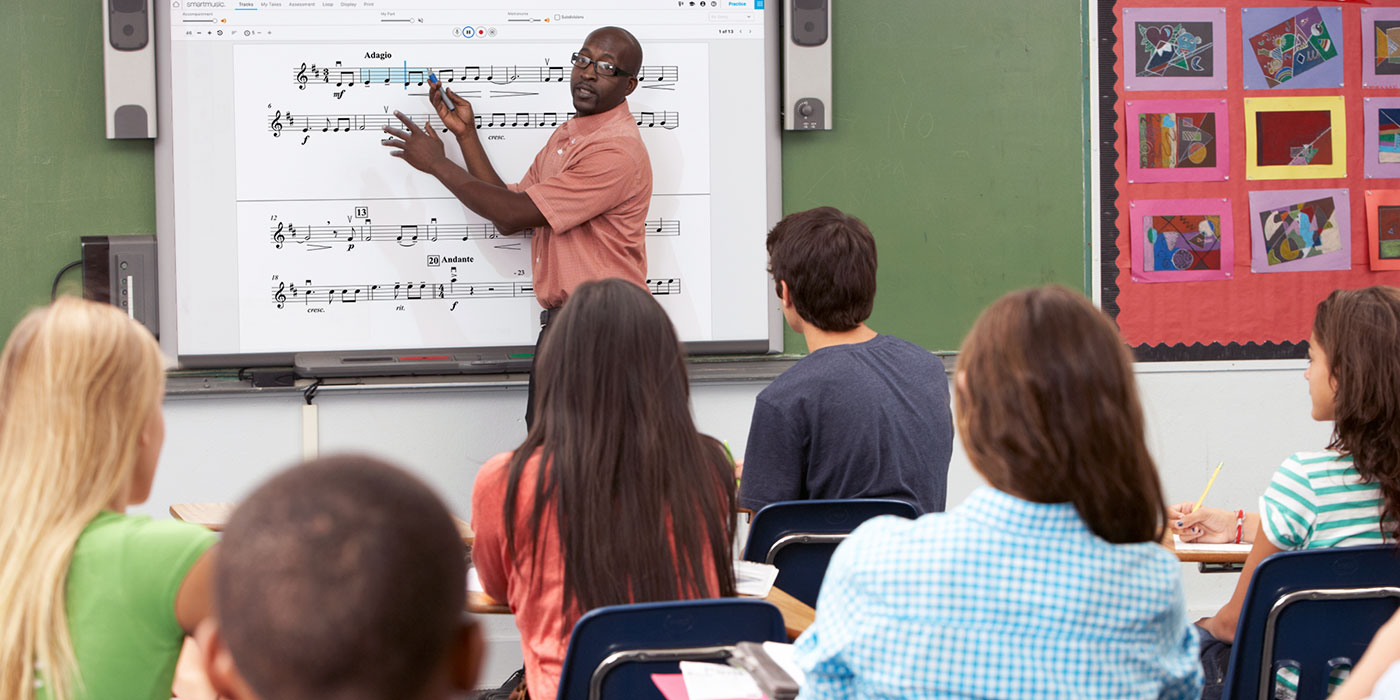
The Why
Have you ever been frustrated that your students are not practicing outside of class? What happens when they cannot practice outside of class? When home life prevents students from spending additional time on their instruments, effective class time becomes paramount to student engagement and success. Through building relationships, incorporating SmartMusic, and Personal Practice Time, we can still produce progress and pride in our programs.
Building Relationships
Instead of getting frustrated by lack of practice time, we must build strong relationships with our students so they feel seen and heard in our classrooms. By getting to know what is going on at home and what our students are interested in, we develop a better understanding of how to meet them where they are instead of where they “should be.” If your students cannot practice at home, they are probably tired of being compared to where they “should be” in school and deserve to succeed at their current level.
Voice and choice is an excellent way to help your students feel successful. Have them help you pick repertoire for performances, warm ups for class, move equipment, or take on leadership roles, such as section leader. The more they feel like they have a say, the more they will take ownership of their learning.
A little bit of mindfulness also goes a long way. Our students face valid stressors and their struggles are real. When we offer our condolences for their situation followed by proactive ways to deal with the stress, our students will engage with our content. Try a mindful minute at the beginning of each class where you all take deep breaths, stretch, have a guided social interaction, or meditate. You will be pleasantly surprised to see how much better and focused you feel as well.
Incorporating SmartMusic
SmartMusic is an excellent tool to increase engagement that can aid in delivering instruction, gamifying your content, incorporating composition, and recording progress. It will also hit your technology integration target that is likely required by your district. Not to mention, our students love screens, so let’s use them to our advantage.
SmartMusic is a seamless way to incorporate decoding. In a large group, you can use SmartMusic to project rhythm reading examples on the board to practice together. There are free rhythm reading examples that range from basic to advanced and you can pull rhythms from your own concert music using the composition tool. Students can also create patterns for each other to decode, which creates a fun composition challenge that checks for understanding of time signatures, rhythm, and more.
If you want your students to practice decoding rhythm and pitch, you can incorporate the Sight Reading Builder tool. It instantly generates new sight reading examples with a click within your set parameters. In a few minutes, students can sight read dozens of examples, which makes hard work feel like a game.
Gamification
SmartMusic makes gamifying your content simple. Your students can compete to see who can read/clap/play rhythms the fastest or the most accurately and give out prizes if that works for your program. The notes on the screen will turn green if they are right and red if they are wrong, giving your students instant feedback. I found my middle schoolers loved prizes that were experiences, such as answering my phone for the day, being equipment crew head, or writing on the board. Low to no cost, sugar free options are ideal.
Composition can also become a game using the compose tool. As a class, you can compose music together on a projector. Student leaders guide the process of adding notes and rhythms within your parameters and you can listen back when you are done to determine if anything needs to change. Students love performing their own music and you might find even the least engaged student gets excited when their creative property is on the line.
At any time, you can use SmartMusic to record your students so that they can hear their progress in large group, small group, and individual settings. In large groups, you can have the accompaniment play behind a group that is struggling with a part of their music so that the rest of the ensemble can move their fingers along for free practice. After recording the group working on their part, the entire class can practice evaluating performances and delivering constructive feedback. SmartMusic is also an excellent sectional tool, especially for students who learn best by ear, because it acts as a coach when you cannot be in a million places at once. Students can see and hear their part with a metronome and check fingerings and pitch. At the end of a sectional, they can record their work so you can hear their progress.
Personal Practice Time
When every moment in class counts, we need to teach our students how to practice when we need to help an individual, address a behavior issue, or are pulled away from instruction. In my program, we use “Personal Practice Time” to teach students to hyper focus on one spot in their music to improve their personal performance.
The process works as such:
- “Class, you have 1 minute on the clock to practice measures 1-8.”
- Walk around and answer questions, fix instruments, address behavior
- “Time!”
- Baton up, play 1-8 and spot check for accountability.
The students must be timed and must be held accountable for their work. Over time, this process teaches students to use their time wisely and develops leadership as students help one another.
Summary
Even if your students can practice at home, engagement increases when we build strong relationships so that we meet their unique needs. SmartMusic is an excellent resource for engaging students in new and gamified ways that helps the hear their own progress. If students feel seen and heard, they will get fired up about our content because they know their contribution matters.
